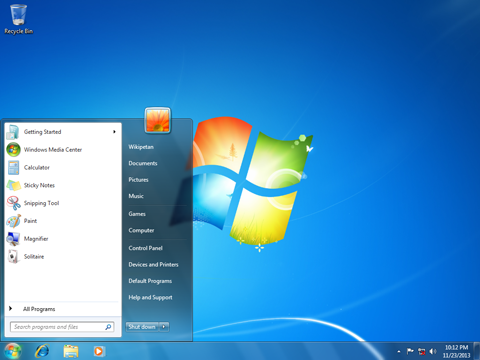Support For Windows 7, Windows 8 To End 10 January 2023

RIP Windows 7. Extended enterprise support for Windows 7, as well as support for Windows 8/8.1 will be terminated next month
Microsoft has signalled the end-of-life for two of its previous operating systems, after announcing that support will be terminated next month.
In a blog post by its Microsoft Edge team, the software giant again reminded customers of the end-of-life for Windows 7 and Windows 8/8.1.
Microsoft had already on 14 January 2020 announced that Windows 7 had reached end-of-life. That meant that consumers no longer received feature or security updates, except in rare instances addressing severe vulnerabilities.
![]()
End of life
But Windows 7 remained deeply entrenched within the business community, so Microsoft provided an optional paid-for extended security update (ESU) programme for enterprise users.
But that is now ending, as is Microsoft support for Windows 8/8.1.
Microsoft announced in its blog post that all updates to Windows 7/8/8.1 will on 10 January 2023.
It also confirmed that its Edge browser will no longer receive updates on these operating systems.
Computers running Windows 7 and Windows 8/8.1 will continue to function after 10 Janaury 2023, but would no longer receive technical support, software updates or security fixes.
“While Microsoft Edge and WebView2 Runtime versions 109 and earlier will continue to work on these operating systems, those versions will not receive new features, future security updates, or bug fixes,” Microsoft said.
Google Chrome will also end support for all three operating systems from 10 January 2023, Microsoft confirmed.
“Internet Explorer 11 will remain supported on those operating systems for as long as they are in support,” it added.
Furthermore, Microsoft also encouraged developers to end support for Windows 7/8/8.1.
“We also encourage developers to end support for Windows 7 and Windows 8/8.1,” said Redmond. “We acknowledge that this may not be easy for some developers to do, however ending support for these operating systems will help keep end users safe from potential security threats and risks as both operating systems go out of support on January 10th, 2023.”
Popular operating systems
The ending of the line for Windows 7, 8/8.1 is notable, considering the sheer scale number of PCs still using those operating systems.
Indeed, according to estimates from GlobalStats Statcounter, roughly 10.25 percent of Windows desktop users across the globe still use Windows 7.
Often those computers are simply not suitable or capable of being upgraded to a new operating system such as Windows 10 or Windows 11 – meaning new PC purchases are the only solution.
And the data from GlobalStats Statcounter also shows that Windows 8/8.1 was not where near as popular, with it estimating approximately 0.79 percent of Windows users are on Windows 8, while a further 2.53 percent use Windows 8.1.
This is demonstrated after Microsoft decided Windows 8/81 is not getting any extended support option.
Windows 10 is by far the most popular version of Microsoft’s desktop operating system, with 69.75 percent of global market share at the end of November 2022.
Windows 11 is only at 16.13 percent at the end of November.
Microsoft experienced similar reluctance among worldwide users and businesses about moving away from its venerable Windows XP operating system, that had first been released way back in October 2021.
Indeed in April 2022 Lansweeper found that Windows 11 uptake was still lagging behind Windows XP.